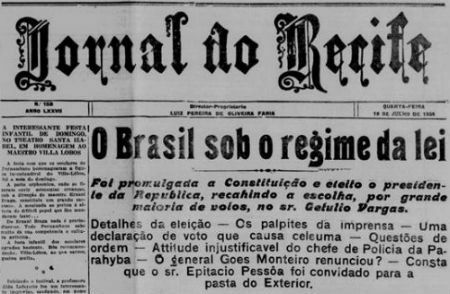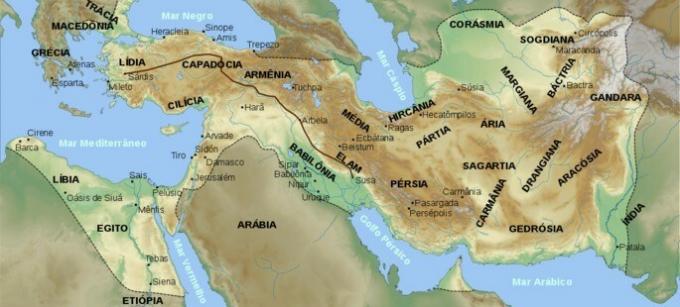THE 1934 Constitution it was the 3rd Brazilian Constitution and the 2nd of the Republic.
The Magna Carta brought news such as the institution of the female vote and Popular Action.

The "Jornal do Recife" celebrates the promulgation of the new Constitution and the new government on July 18, 1934
Historical context
Brazil was undergoing significant political changes in the 1930s.
Getúlio Vargas and his allies had managed to overthrow President Washington Luís and a Military Junta established a Provisional Government.
During this period, the Constitution of 1891 ceased to be in force and Decree 19.380/30 was issued in its place, which determined:
- The end of governors' politics;
- The disarmament of colonels;
- The dissolution of the National Congress, Legislative Assemblies and Municipal Chambers;
- The Provisional Government would exercise the Legislative and Executive Powers;
- The President of the Republic would rule by decree.
These measures should have a transitional character, but Getulio Vargas he made no move to change this situation.
Thus, the state of São Paulo launched the 1932 Revolution with the aim of overthrowing the government and giving the country a Constitution.
Although the Paulistas were defeated, Vargas could no longer delay calling a Legislative Assembly if he wanted to remain in power. Therefore, he calls for legislative elections and inaugurates the work for the elaboration of the new Constitution.
Read more:
- Washington Luis
- 1930 revolution
- 1932 revolution
- Governors Policy
Features of the 1934 Constitution
- Federative Republic as a form of government;
- United States of Brazil;
- It incorporated the female vote;
- It determined that electoral suffrage should be universal, secret, direct and by majority vote;
- Established free and compulsory primary education;
- The Chamber of Deputies was directly elected, but there were also representatives elected by professional organizations;
- Executive power was exercised by the President of the Republic for a four-year term and without the right to re-election;
- Established the Electoral Court and the Labor Court;
- Provided for the writ of mandamus;
- He instituted the Popular Action.

Almerinda Farias Gama, deputy elected as representative of the Union of Typists and Shorthand writers and the Federation of Labor of the Federal District
Curiosity
The 1934 Constitution was the one that lasted the shortest in the entire history of Brazil: just three years.
Check out and download the 1934 Constitution in PDF.
read more:
- Provisional Government
- It was Vargas
- Female vote in Brazil
- Brazilian Constitutions
- Brazilian Integralist Action
- Exercises on the Vargas Era



